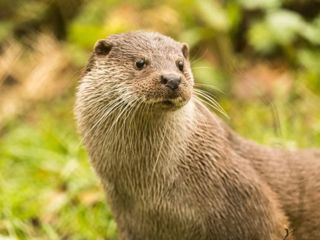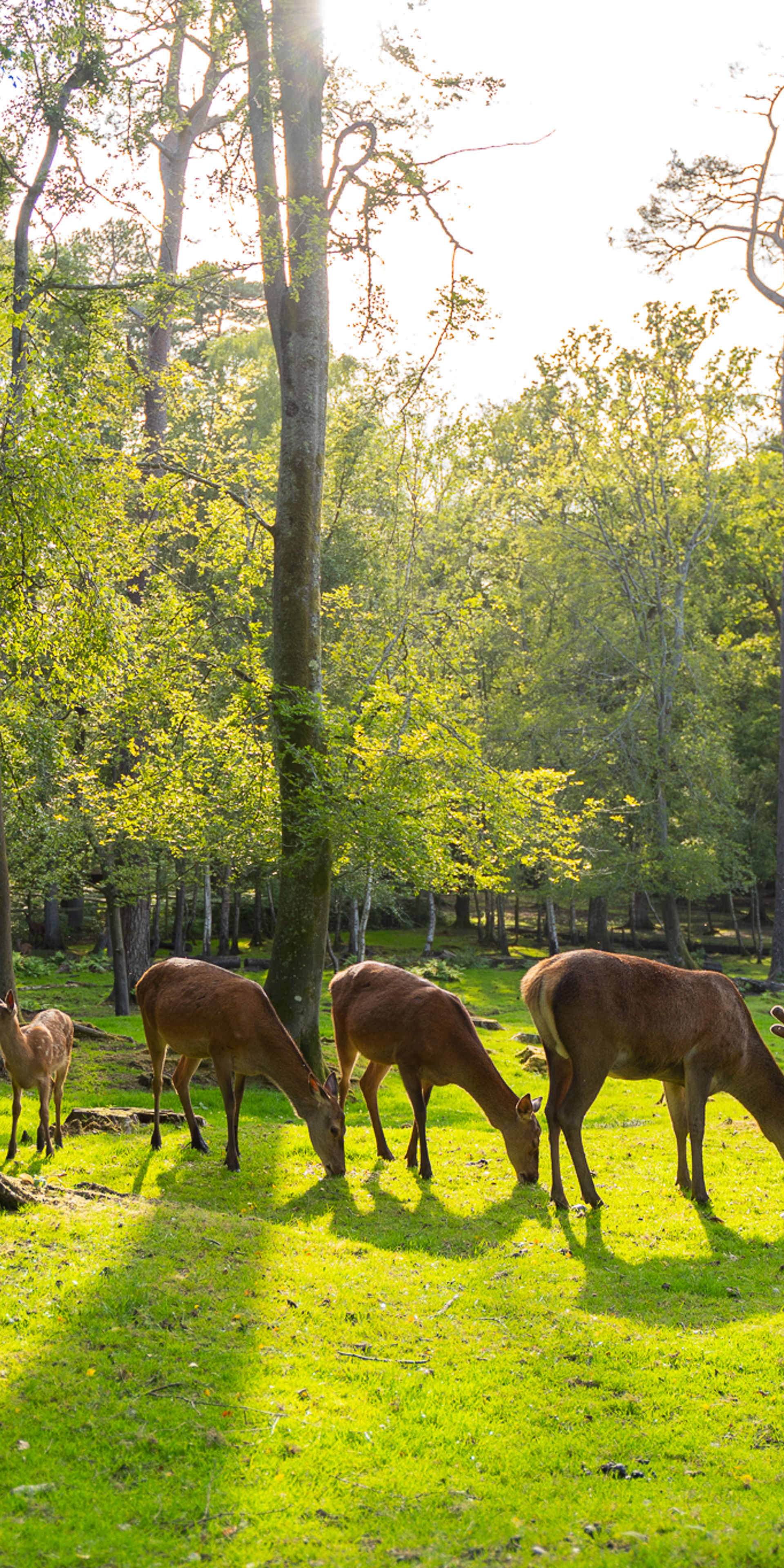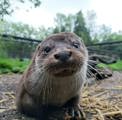Eurasian Otter

General information
The Eurasian Otter is an incredibly elusive otter that has brown fur with a paler underside and a wide face. In most of its range it is nocturnal except in the Shetlands where it is diurnal. The Eurasian Otter is a solitary animal, with males breeding with multiple female partners any time of the year! After a gestation period of 60 to 70 days, the female will raise 2-3 pups on her own and they will remain with mum up to 14 months old. This otter is extremely susceptible to human destruction of its territory although there are signs of increased otter activity closer to towns etc.
The Eurasian Otter is well adapted for swimming with: their ability to close their ears and nose while diving under water, webbed feet, double layer of fur for insulation and waterproofing and finally their large lungs and ability to slow their heart rate means they can dive under for up to 4 minutes. Due to being able to hunt both in water and out, they have a range of prey from fish, amphibians, crustaceans, small birds and mammals.

Latin name - Lutra lutra
Class - Mammalia
Order - Carnivora
Family - Mustelidae
IUCN Status - Near threatened
Habitat - Highland and lowland lakes, steams, marshes and coastal waters
Distribution - Range covers Europe, Asia and Africa in many of these areas the otter is extinct or reduced to small fragmented groups
Lifespan
5 - 10 years in the wild. Up to 20 years in captivity
Threats
Pollution, habitat loss, poaching and car collisions.
Fun Fact
Otters don’t just have whiskers around the muzzle and nose, they have a few stiff whiskers on their elbows too – this helps them to detect vibrations in the water to track down moving prey.
Our Residents
Chestnut, our male Eurasian Otter was named after where he was born, our previous park, the Chestnut Centre! Chestnut can often be seen sleeping in his holt inside the Main Building.

Sign up to our newsletter
Join our mailing list in order to keep up to date with park news and special offers.




